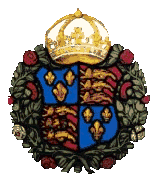

|
By clicking on the subject of your choice in the sub index below, you will be taken directly to your selected page, which will open in the same window. To view further pages within this section, you can either use the next button at the foot of the page, which will move you through the section one page at a time. You can also return to this index page by using the Previous button, again at the foot of the page, or you can use also make use of your back button. You can of course also open all links from the index page in a separate window using the right click facility on your mouse and selecting "Open Page in New Window". There is also a fifth option of using the Site Index button at the foot of the page to navigate from the main index page. Five methods a all designed to make navigating this site as easy as possible. The Tudors ruled England from 1485 to 1603, and oversaw some of the most dramatic and unforgettable events in our history.
The first Tudor King, Henry VII, came to the throne in 1485, after the battle of Bosworth Field, which ended the War of the Roses, and signalled the start of the Tudor Dynasty which was to rule England for the next 118 years. There were to be five Tudor monarchs, excluding Lady Jane Grey (Queen Jane I) who ruled for only nine days in 1553, with Henry VIII and Elizabeth I being the most powerful of these monarchs. Both were powerful personalities able to control their squabbling councillors, and to answer the demands of an increasingly vocal Parliament. Henry VIII's quest to produce a legitimate heir led to a split with Rome and The Protestant Reformation. This resulted in the establishment of the Church of England under the leadership of the King as The Supreme Head. It also led to the Dissolution of the Monasteries, and the sale or destruction of most of the Catholic Church's property in England. Under Henry VIII, English authority was tested on the Continent, though even military victories were too costly to maintain. His son, Edward VI, was just a child when he inherited the throne, and his councillors continued to strengthen the Protestant state started by his father, but their plans were dashed when Edward died at 16 years of age. There was a failed attempt to place his Protestant cousin, Lady Jane Grey, on the throne instead of the Catholic Princess Mary. Mary became Queen to great public acclaim, and initially she was popular with all. However, her policy of religious persecution, a hated marriage to Philip of Spain, bad agricultural conditions, and a large burden of inherited debt, soon left Mary broken-hearted and disliked. She was succeeded by her half-sister, Elizabeth, who was a religious pragmatist and passionately devoted to her country. Elizabeth's policy of toleration was extended to both the religious and political spheres. Above all else, she avoided extremism, often prevaricating over major decisions, and was unwilling to take any action before all diplomatic attempts failed. This in turn infuriated many of her advisors, but it also gave her country the religious and political peace it needed to thrive. Her reign was marked by the great victory over the Spanish Armada in 1588, the artistic achievements of men such as Shakespeare and Bacon, and English exploration and colonization of North America. Tudor England was a time of great change. The Tudors established England as a world power by adopting a role as a peace-maker between the duelling powers of France and Spain. Their rule was generally unchallenged, and this period of stability allowed England a much-needed respite from the War of the Roses. The system of Government ran more efficiently after it had been stabilized and centralized Under Henry VII. A uniform system of justice and taxation was introduced throughout the country. And, as always in times of peace, the arts flourished. During the sixteenth century, England emerged from the medieval world. It was a time of great change, most notably it marked the end of the Catholic Church in England. There was an attendant rise in nationalism, a new spirit of confidence and patriotism swept the country. Great naval exploits began the great English seafaring tradition. With such renowned sailors as Sir Walter Raleigh and Sir Francis Drake, Elizabethan sailors controlled the seas. The Tudor dynasty ruled England from 1485 to 1603.
Previous Last Edited 03/07/2006 Copyright © 2000-2006 Witheridge Unless otherwise indicated on the page in question, the photographic images reproduced on this site belong to the Witheridge Archives, and, as such may not be reproduced for commercial purposes without written permission. However, you are welcome to use any of the photographs belonging to the archive for personal and/or non-commercial use. Any material shown as not being owned by the archive may not be reproduced in any form without first receiving written permission from the owner of the material in question. |


